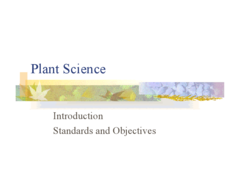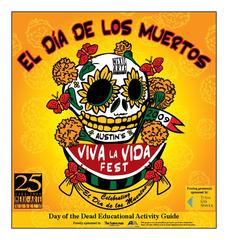Curated OER
The Crucible by Arthur Miller
Understanding the historical context of Arthur Miller's The Crucible is an important part in understanding the play itself. Over 25 slides, the audience learns details of Miller's early childhood and some major events that were happening...
Curated OER
Plant Science Introduction
A unique PowerPoint explains the basics of plant science. It motivates viewers to study plant science and then lists different food products, biofuels, fibers, timber, and ornamental uses of plants. It concludes with lists of careers...
Curated OER
British Romanticism: An Introduction to the Social/Cultural Contexts
The major tenets of British Neoclassicism and Romanticism are listed in a presentation that also notes the significant consequences of industrialization. No context is provided for the slides of the paintings.
Curated OER
Slope
A nicely put together basic introduction to slope. Slope is defined, and explained. The formula for calculating slope is shown and there are practice problems. There are questions about horizontal and vertical slope, as well as...
Curated OER
Bacteria
The first slide lists the six kingdoms in the biological hierarchy, but the remaining 10 slides cover characteristics of archaebacteria and eubacteria. Topics include how energy is obtained, arrangement, and shape. This brief, but...
Curated OER
Uses for Elements in the Carbon Family
By providing a quick and informative overview of carbon-related products, this presentation would be useful as an introduction to the topic or as a review. In a concise and easy to understand way, this presentation lists facts about...
Curated OER
Atmospheric Chemistry
If you need a comprehensive review of the development of Earth's atmosphere through the ages, then this is for you! The presentation starts with a introduction to theories of planet formation and initial distribution of isotopes in the...
Curated OER
Generic Stoichiometry
Click-by-click, you can teach young chemists how to calculate stoichiometric problems. There are only three slides of information, but they walk viewers through every consideration that must be made when performing these calculations....
Curated OER
Taxonomy - The Science of Naming Organisms
Carolus Linnaeus designed the binomial nomenclature system of naming organisms that is still in use more than 200 years later. By viewing this PowerPoint, upcoming biologists learn how to use it. They are also introduced to the hierarchy...
Curated OER
Phytoplankton
Tomorrow's marine biologists journey through the world of phytoplankton when viewing this slide show. They are exposed to the shapes and life cycle of diatoms, and introduced to dinoflagellates, coccolithophorids, and silicoflagellates....
Curated OER
Who Was Anne Frank?
Introduce your eager readers to WWII through the eyes of a real girl. Presented here is a basic overview of the life of Anne Frank and her contribution to world literature with the publication of her diary. A perfect introduction to the...
Curated OER
Why is Handwriting Important?
Love this resource! Have your ever found it difficult to get your class to buy into the idea that handwriting is important? This resource provides a history of handwriting and a detailed discussion of the importance of it as a...
Curated OER
Earth Science
A slide for each of the planets (including recently downgraded Pluto), the sun, our moon, four of Jupiter's moons, and the rings of Saturn make up this visually appealing PowerPoint. A few facts for each body in the solar system...
Curated OER
Zooplankton
Holoplankton are always plankton, whereas meroplankton are only plankton as larvae. Reveal several examples of each to your young marine biologists with this PowerPoint presentation. The first seven slides, an introduction to...
Mexic-Arte Museum
El Dia de los Muertos
Celebrate the traditional Mexican holiday El Dia de los Muertos! Explore the intricate history behind the traditions, compare other cultural rituals honoring the dead, and create sugar skulls. Learners read informational text on Aztec...
Curated OER
Chapter 9: Language Processing: Humans and Computers
Designed to accompany An Introduction to Language by Victoria Fromkin, Robert Rodman, and Nina Hyams, this powerpoint addresses a number of language, technological, and sociological topics. The slides could be helpful in either a...
Curated OER
What is Language?
Intended to be used along with the first chapter of An Introduction to Language textbook, this PowerPoint is full of linguistic terminology that is not necessarily explained. This tool can be used to complement a lecture or a text, but...
Curated OER
Properties of Equality
What assumptions are made in order to solve equations? An instructional slideshow provides an overview and guided examples of how properties of equality can be used to justify each step in solving equations.
Gulf University
The Elements of Drama
Introduce young actors to the meanings of basic drama literary, technical and performance elements with this colorful presentation.
Curated OER
Percent I
This PowerPoint introduces and defines the concept of percents. The slides contain a thorough definition of percents and examples of how we use percents in our daily lives. This PowerPoint is fantastic way to introduce a unit on percents.
Teach Engineering
Above-Ground Storage Tanks in the Houston Ship Channel
Introduce your class to storage tank failures caused by major storms with an activity that looks at how the concepts of Archimedes' Principle and Pascal's Law affect the storage tanks along the Houston Ship Channel. The background...
Curated OER
Visible Speech: A Short Course in the Fundamentals of Writing
Use this presentation to introduce a class or lecture about writing organization. The slide show is the first part in a five-part series, titled "What is an Essay?" The slideshow is short and could use more detail, but functions as a...
Texas A&M University
Genetics Using Punnett Squares
Gregor Mendel was a monk who failed his teaching certification exam. He then dedicated his life to science and ended up creating the field of genetics. This presentation introduces the concepts of genetics and Punnett squares.
Curated OER
The United States and Canada
While just a short review of some simple facts about the United States and Canada, this could be a useful resource for an introduction to North America. Teachers could use this as a model for student projects or could add more...
Other popular searches
- Introduction to Poetry
- Introduction to Fractions
- Introduction to Economics
- Introduction to Biology
- Introduction to Trigonometry
- Introduction to Holocaust
- Introduction to Genetics
- Introduction to Civics
- Introduction to Powerpoint
- Introduction to Sociology
- Introduction to Division
- Introduction to Poetry Terms























